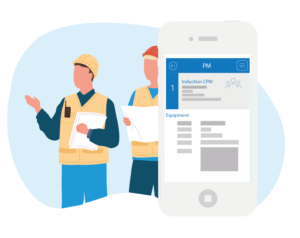Does landlord insurance cover rodent infestation?
If your tenants are hearing strange scratching noises in the roof, discovering unexplained holes in their food packaging, and noticing frayed electrical cables, these are clear signs you’re facing a rodent infestation.
A rodent infestation is a major problem, especially in multifamily property management. Rodents pose health risks to tenants by spreading diseases and can cause damage to the property’s infrastructure, including electrical wiring and building materials. This type of infestation can easily spread across multiple units, to widespread tenant dissatisfaction and safety concerns.
Dealing with a rodent infestation involves hiring professional pest control services and, in some cases, repairing any damage the pests have caused. These steps are essential for making your property safe and livable, but they come at a cost. This raises the question: does landlord insurance cover rodent infestation and related expenses? Let’s find out below.
Is rodent infestation covered by insurance?
Landlord insurance does not typically cover rodent infestation. This means that you will not be able to claim the costs for the professional pest control services or any repairs to damages caused by the rodents.
Rodent infestations are often a result of a lack of planned preventative maintenance, such as not sealing gaps in doorways or delaying trash removal. This means that landlord insurance policies typically exclude coverage for rodent-related damages, expecting you to prevent these issues with thorough maintenance.
What is pest control insurance?
If you’re worried about rodent infestations, consider getting pest control insurance. This specific type of insurance will cover the costs associated with the extermination of pests, including rodents, that standard landlord insurance policies exclude.
All-inclusive cover plans
All-inclusive cover plans might offer broader protection against a variety of risks, including pest infestation. This type of plan might cover the costs of exterminating pests, repairing the damage they cause, and compensate you for lost rental income during the extermination and repair process. It’s essential to review the policy specifics to ensure that you will be covered in the event of a rodent infestation to justify the higher costs of an all-inclusive cover plan.
What signs should you look for in your rental property?
Common signs of a rodent infestation include nests made of shredded paper or fabric, droppings, gnawed wires or furniture, and strange noises, like scratching, coming from walls or roof. There may also be a distinctive musky odor. Identifying a rodent infestation early can reduce the damage and costs associated with eradication and repairs.
What mice and rats are common in rental properties?
Common rodents found in US rental properties include house mice, Norway rats, and roof rats. It’s essential to get a professional pest control company to identify the exact type of rodent present, as each one requires a specific strategy for effective removal.
How to prevent a rodent infestation
Consistent maintenance is your best defense against a rodent infestation. There are specific tasks that should be on your maintenance service checklist to prevent a rodent infestation in your multifamily property.
Seal entry points
Rodents can squeeze through small spaces, so it’s essential to seal any cracks or holes on the exterior of your property. You need to regularly inspect the property’s exterior and repair any new gaps to prevent rodents from gaining entry.
Proper waste management
Rodents are attracted to garbage and food waste. Ensure that all garbage bins are securely closed and garbage is disposed of regularly. You should also encourage tenants to manage their waste properly to reduce the likelihood of attracting rodents.
Landscaping
Overgrown vegetation can provide shelter and hiding spots for rodents. Keep the grass at your multifamily property cut short and trim bushes and trees away from the property to prevent access through open windows.
Food storage
You should advise tenants to store food in sealed containers and avoid leaving food out. This practice helps to minimize the food sources available to rodents, making your property less attractive to them.
Water sources
Rodents need water to survive. By removing water sources, such as fixing leaks promptly, you make your property less inviting. Regularly check for leaky faucets or pipes and address issues immediately.
Regular inspections
Regular inspections can catch signs of rodent activity early. Ensure that your maintenance team looks for droppings, checks for signs of gnawing, and listens for unusual noises during inspections.
FAQS about insurance cover for rodent infestations
Contact MRI Software
If you want to find out more about how MRI’s multifamily property management solutions can help your organization, contact us today.
Multifamily Tour Path Inspection Guide
Showing off your multifamily property is one of your first and best opportunities to “wow” prospective residents. As such, completing a tour path inspection is essential to a successful leasing experience. MRI Living is here to help you p…

